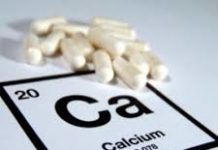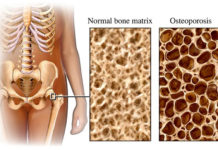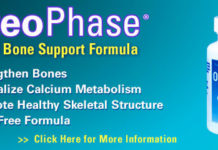Enclosed is a copy of my latest bone density test (see below). I have taken your OsteoPhase formula for the last year and a half and have had good results with it. I take three capsules daily and my bones feel much stronger now. I also have more energy and better mental concentration in general.
My bone density report compares my current test with the one from last year, and again from 1998.
Thank you for your excellent product.
Sincerely,
Waltraud H.
|
Click on images or links below to see full size image in new window.
|
|||



















At the age of 67, Waltraud H. was bedridden with spinal fractures caused by an extreme case of osteoporosis. The year was 1998 and a DEXA bone scan of her left hip revealed that she only had 25% – just one-fourth – of the normal bone density of a typical woman of her age. To make matters worse, her T-score of -6.2 indicated that her bone density was lower than 99% of all women in her age group.
In June 2005, at the age of 74, Waltraud began taking OsteoPhase in the hopes of forestalling further loss in hip bone density. Three months later, after taking 2 capsules twice per day her next DEXA showed, despite aging trends and expectations, that she actually experienced a 12.3% improvement in her hip bone density (see images above). Waltraud reported to us at that time that she was feeling stronger, was able to walk with greater ease and generally go about her daily chores with much less pain than before.
Waltraud continued to take OsteoPhase at a rate of three capsules per day. One year later, at age 75, her DEXA test scan again indicated a significant gain, revealing a further improvement in hipbone density of 22.4%. During this period in which Waltraud took OsteoPhase daily, her T-score improved 0.8 points.
Today Waltraud now has 50% of the bone density of a woman her age, compared to seven years previously when it was down to 25%. While her bones are still brittle, her recent scores reflect a significant 30 to 40 percent reduction in her risk of suffering a severe fracture when compared to data from a National Osteoporosis Risk Assessment study of 200,000 postmenopausal women.
John Steinke, L.Ac.